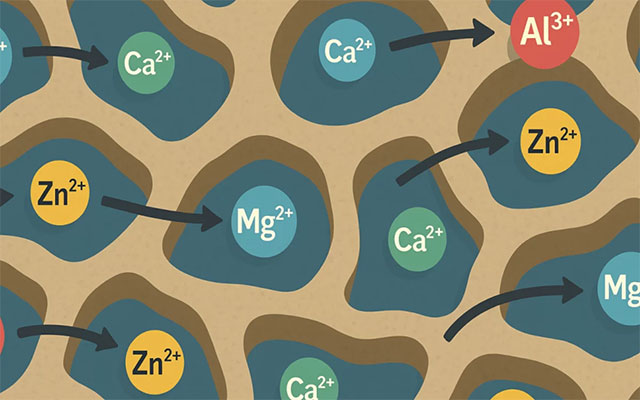AI Just Discovered the Future of Batteries – and It's Not Lithium
Artificial Intelligence technology is increasingly making outstanding contributions to the field of scientific research. Accordingly, AI has just helped scientists find 5 new potential materials that can replace and surpass lithium in future batteries. These discoveries open up the possibility of developing cheaper, safer and more powerful batteries, using common elements such as magnesium and zinc.
The problem with lithium-ion batteries
Specifically, a research team at the New Jersey Institute of Technology (NJIT) used AI to solve a major challenge: finding materials to replace lithium-ion batteries - which are increasingly expensive and environmentally unsustainable.
In a study published in the journal Cell Reports Physical Science , Professor Dibakar Datta and his colleagues used generative AI to quickly identify porous materials suitable for multivalent-ion batteries. This new generation of batteries uses more common elements such as magnesium, calcium, aluminum and zinc, promising a more economical and environmentally friendly future for energy storage.

Unlike lithium-ion batteries that carry only one positive charge, multivalent batteries use ions with two or three charges, allowing them to store more energy. However, the big drawback is that these ions are large and highly charged, making them difficult to move around in conventional battery materials.
This is where AI's strengths come in: finding new materials that are better suited to conducting these large ions efficiently.
Professor Datta shares:
The biggest challenge is not a lack of chemistry ideas, but the impossibility of testing millions of different material structures. AI helps us do that quickly and systematically.
To do this, the team developed a dual AI system:
- CDVAE – a deep learning model capable of proposing new crystal structures based on data from a wide range of known materials.
- LLM – a large language model fine-tuned to select the most stable, easy-to-synthesize materials in practice.
5 breakthrough materials
Using the power of AI, the team discovered five transition metal oxide materials with completely new porous structures, with large conductive channels that allow multivalent ions to move quickly and safely – a key factor for next-generation batteries.
These materials were then tested by quantum mechanical simulations and stability testing, showing high synthesis and practical application potential.
Professor Datta emphasized:
This is not just the discovery of new battery materials, but a completely new method of searching for advanced materials that can be applied to electronics, clean energy, and many other fields.
Next, the team will collaborate with experimental labs to synthesize and test the AI-designed materials, taking another important step on the journey to commercializing multivalent batteries.
You should read it
- Scientists have successfully developed a lithium battery that will never explode despite overheating
- Learn about some Battery technologies
- Battery thin-film - A safe alternative to lithium-ion batteries
- What is solid battery? Will they solve the battery life problem?
- China develops battery technology that is better and cheaper than lithium-ion
- Don't, and exactly, never leave your phone down to 0% battery!
 Free document scanning app Microsoft Lens is about to be 'killed' - what's worth noting?
Free document scanning app Microsoft Lens is about to be 'killed' - what's worth noting? AI system uses smartwatches to detect potential health risks early with high accuracy
AI system uses smartwatches to detect potential health risks early with high accuracy This 'wonder material' can be bent in unprecedented ways
This 'wonder material' can be bent in unprecedented ways Copilot has visual expressions with real-time emotions
Copilot has visual expressions with real-time emotions Successfully created 'living' concrete that can heal cracks by itself
Successfully created 'living' concrete that can heal cracks by itself Breakthrough technology that could 'kill' headphones: Bending sound straight into the listener's ear
Breakthrough technology that could 'kill' headphones: Bending sound straight into the listener's ear